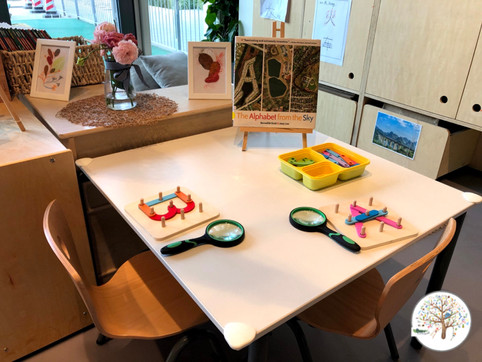An ‘intervention’ on Provocations & Invitations!
- Joshua Barr (M.A. M.Ed)
- Sep 21, 2020
- 3 min read
The Reggio Emilia Approach continues to be very popular yet some schools, teachers and families still struggle to fully understand and implement it. Rightly so because Reggio is very complex and there are no training manuals or certification courses. There are certain buzz words that are frequently associated with Reggio Inspired practice. Provocations and Invitations are two elements of what many consider to be essential to following ‘Reggio practice’, ‘loose parts’ is another example. If you search the internet for information on how to ‘go Reggio’ you are very likely to come across information discussing provocations and invitations as very Reggio.
Like many elements of Reggio, provocations and invitations are often over simplified. Particularly to certain types of activities for children to play. In a previous article we compared the complexity of the Reggio approach to the ‘Manchu Han Imperial Feast‘, the grand royal banquet served during the Qing dynasty. The feast has over 300 dishes. If provocations and invitations were part of the banquet it wouldn’t be two distinct dishes but rather important ingredients found in many of them. When starting out in Reggio Inspired practice teachers can often reduce provocations and invitations to just table activities like the pictures below.
The use of provocations and invitations flow much deeper through the Reggio approach. As it says in ‘The Hundred Languages of Children’ “The wider the range of possibilities we offer children, the more intense will be their motivation and the richer their experiences”. If children show an interest in dinosaurs, simply putting some dinosaur toys in one area and/or inviting them to draw a T-Rex in another is not the same to what happens in a Reggio school. There is no chapter in ‘The Hundred Languages of Children’ that explains how to set up provocation and invitation activities on tables because the art of provoking a responds and inviting children to think about something in a new way is more complex. A word often used in the book is ‘intervention’.
“Interventions are careful and specifically-designed to facilitate children’s thinking, to “provoke” them to go further in their thinking, or to give them the facility they need with a medium such as clay to use it successfully as a language to explore and express knowledge”.
Interventions are extensions of the environment, which in Reggio is called ‘the third teacher’. They also part of the dialogue between adults and children. An important aspect of a Reggio educators responsibilities is to actively engage children in conversation, “Thus, the teacher’s role centers on provoking occasions of discovery through a kind of alert, inspired listening and stimulation of children’s dialogue, co-action, and co-construction of knowledge.” (The hundred languages of children).
The wrong direction is sometimes taken when teachers simply put activities on the table for children to complete without engaging them and the activity in serious thought, communication and reflection. Maybe this is why the word ‘intervention’ is used in the ‘Hundred Languages‘ often because it is a cautious word that requires careful consideration. Whereas the words provocations and invitations are very positive that encourage application, intervention requires consideration. So we should treat them like interventions with careful consideration and hesitance to really consider how and when we use them.
To invite children to take part in something and provoke a response or reaction is a careful and meaningful dialogue the child has with the environment, teachers, families and community. As you build the relationship with your students your ability to engage them through provocations and invitations will become easier as “it is difficult to find equilibrium within your different interventions with the children unless you know them very well, and even then, it is a complex situation that is always in front of you.” (The hundred languages of children). As with all things in early childhood education ‘the magic key’ is found in building a strong relationship with each child in your class.
We hope this will help you reflect on and deepen your understanding of the Reggio Emilia Approach and also the use of provocation and invitations. To help you on your way a little more below is a table taken from Fairy Dust Teaching that will help you understand the differences between provocations and invitations. Remember it is more than what you put on a table or in a center.

By Joshua Barr
(BarrKinderplay)









Comments